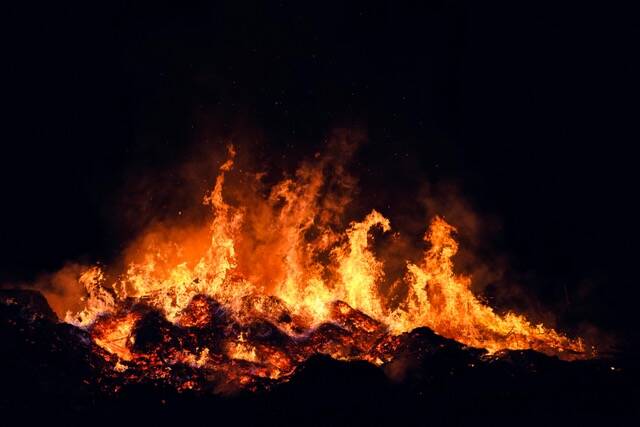Climate change can significantly heighten the risk of natural disasters, particularly wildfires which pose a concern to the San Juan Islands. The State of Washington’s Department of Ecology explains that “climate change causes forest fuels to be drier and more ready to burn.” They report that the number of large fires in the western United States has doubled between 1984 and 2015.
Projections cited by the State of Washington’s Department of Ecology show that “an average annual rise in temperature of one degree Celsius may increase the area burned in a typical year by as much as 600 percent.
Paul Anderson, executive director of the San Juan Islands Conservation District, shares “Wildfire risk and being prepared for wildfire is at the top of mind for a lot of people.” He explains that “with extended droughts, more competition for water, and hotter, drier summers, we are going to be more prone to fire risk.”
Brendan Cowan, Emergency Management Director of San Juan County speaks to the importance of understanding the science behind these risks. “I don’t think anyone knows yet exactly how that’s going to play out, but we certainly have to be on the lookout for that,” he says. However, Cowan remains optimistic, adding, “But I do think that if we are thoughtful and careful in how we prepare for that and avoid starting fires in the first place, I think it’s manageable.”
Lopez Island Fire Chief Adam Bigby also cautions about the implications of longer, drier summers and dwindling water supplies. “The big thing that concerns me is we’re going to have longer, drier summers,” Bigby says. “We don’t have the water available even now, so what’s that going to look like in the future?”
Carson Sprenger, General Manager of Rain Shadow, a company specializing in ecological restoration, echoes these concerns, noting that the current vegetation composition on the islands makes the landscape highly fire-prone under dry and windy conditions. “I think a lot about drought and fire with the current composition of our vegetation,” he says.
David Bill from Midnight’s Farm on Lopez Island also highlights the compounding effects of climate change on fire risk. He observes, “It’s kind of a multiple storm where you have wetter springs, which make for more vegetation and grass paired with drier summers to make it great fuel for fires. Also partly as a result of climate change, we are having more people coming up to the islands and people are the cause of fire in the San Juan islands.”
Regarding the county’s current state of preparedness, Cowan asserts, “Overall, our community does a better job of [preparing ourselves against natural disasters] than many other places.” He attributes this to the islanders’ independent mindset, noting, “People who choose to live on islands usually have a desire to be self-sufficient and use common sense and understand that we live in a place where our connection to the mainland is tenuous… we’ve all seen how the ferry can be disrupted and power can go out.” However, Cowan emphasizes, “There’s still a lot of work to do.”
Fortunately, San Juan County is already taking proactive measures to mitigate wildfire risks to protect our community. Paul Anderson, executive director of the San Juan Islands Conservation District, highlights the Wildfire Ready Neighbors program. Through this initiative, landowners and homeowners can sign up for a free site assessment, during which experts evaluate properties and provide a report card on wildfire preparedness.
The Lopez Community Land Trust (LCLT) is setting an example in building homes with fire risk in mind and taking proactive steps. LCLT Director Sandy Bishop explains the importance of choosing fire resistant building materials and creating defensible space around homes.
Brendan Cowan, the county’s Emergency Management Director, emphasizes the importance of proactive thinking. He underscores that there is no single solution to preparedness, advocating for diverse approaches. “Lots of different people have different ways to be resilient, and they are all right. As long as you have thought about it and have a plan, that’s great,” Cowan explains. Bigby echoes the need for individual responsibility. “People worry too much about their neighbors and not enough about their own property,” Bigby says.
Bigby also raises concerns about the shortage of volunteers and funding for the fire department.
San Juan County is taking action to address the growing wildfire risks fueled by climate change. Through initiatives like Wildfire Ready Neighbors and fuel load reduction, the community is taking important steps towards preparedness. However, as climate threats increase, ongoing efforts are needed. Local leaders stress the importance of individual responsibility, ecosystem restoration, and securing adequate funding and volunteers. While challenges remain, the county’s proactive approach and community resilience offer hope for protecting its landscapes and way of life from the escalating wildfire threat.
Isara Greacen is a Climate Communications Intern for the Lopez Community Land Trust. She grew up on Lopez Island and now attends Scripps College.




